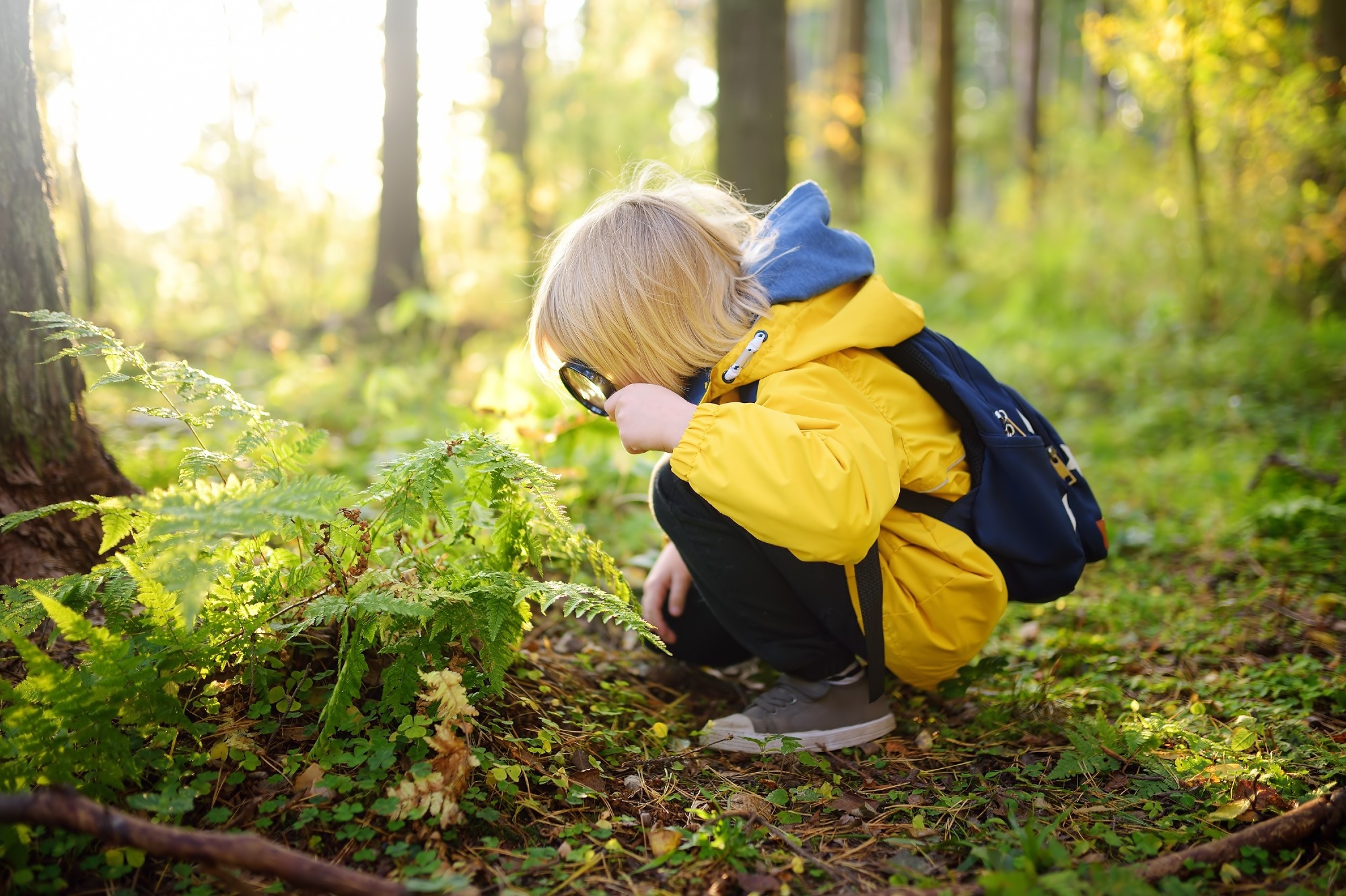This review further highlights conventional difficulties in studying curiosity, particularly the challenges of measuring and distinguishing it from other cognitive processes and information-seeking behaviors, while suggesting future directions to overcome these challenges.
 Study: Curiosity in children across ages and contexts. Image Credit: Maria Sbytova / Shutterstock
Study: Curiosity in children across ages and contexts. Image Credit: Maria Sbytova / Shutterstock
What is childhood curiosity, and how does it benefit children?
The Merriam-Webster dictionary defines 'curiosity' as "an eager desire to learn and often to learn what does not immediately concern oneself." However, in psychology and science, the definition of curiosity is not as straightforward, with most current definitions being approach- or context-specific. The journal paper emphasizes that curiosity is operationalized as a state involving information-seeking behavior that is intrinsically motivated and seeks specific information. Despite the absence of a universally accepted working definition, researchers largely agree that childhood curiosity is a ubiquitous 'need to know' that manifests itself from infancy through adolescence.
While the age-old proverb "curiosity killed the cat" is often used to warn children away from unnecessary investigation or experimentation, decades of research beg to differ. Studies have shown that curiosity plays an essential role in developing children's learning, memory retention, and critical thinking abilities. In the short term, higher curiosity has been linked with significantly higher performance in preschool, kindergarten, and school education. In the long term, the trait has been shown to improve individuals' information-gathering, perception, and evaluation abilities.
Additionally, curiosity is known to support incidental learning wherein curiosity-driven interest in a specific topic promotes learning and retention of unrelated information, thereby creating a cascading knowledge acquisition network. Encouraging rather than demotivating curiosity, especially in younger individuals and academically vulnerable children, can foster an enjoyment of learning and improve academic performance and emotional growth. The review highlights that effective methods to induce state curiosity include uncertainty generation, surprise, and ambiguous causal information dissemination.
What is 'state' curiosity, and how does it differ from 'trait' curiosity?
A frequent shortcoming of most curiosity-focused literature is their inability to sufficiently operationalize the term, thereby preventing the development and use of empirical measures that can be used to compare outcomes between studies. Even in empirical studies, measures used are often so broad in terminology that important curiosity-centric characteristics are frequently missed.
The most efficient means of overcoming this challenge is formally operationalizing the term's definition and differentiating between its different forms, notably trait, state, and learning. Trait curiosity is the stable characteristic of the drive to resolve uncertainty. Unlike state curiosity, the 'in-the-moment' requirement of information acquisition to fill a pressing knowledge gap, trait curiosity is often interest-based, long-term, and may not involve information immediately beneficial to the curious individual.
Ongoing metacognition research aims to further refine this distinction by employing metacognition frameworks (monitoring and control stages) to elucidate the internal processes governing information seeking. In the future, this may allow for novel metrics beyond the current gold standards of self-rating and external observations of information-seeking. The paper underscores the need for more precise operationalizations and measures of curiosity that capture both its internal and external manifestations.
Do all children experience curiosity equally?
The short answer is 'probably not.' Unfortunately, the long answer is slightly more complex, given sampling biases (most studies conducted on White populations, with minorities understudied) and difficulties in measuring curiosity in infants. Furthermore, a growing body of research identifies individual differences in curiosity, while parallel studies suggest cultural underpinnings to the characteristic.
It has widely been accepted that curiosity declines with age. However, longitudinal evidence to back this belief remains largely lacking. Given the challenges above in evaluating age-associated curiosity, the present review posits that instead of focusing on a particular age group, methods to promote curiosity irrespective of age must be developed to encourage childhood growth from infancy through adolescence.
This introduces an emphasis on 'context' as a driver of curiosity, particularly the physical context (location – school, home, or others), the social context (interactions with different adult or peer groups), the socio-economic context (resource availability as a function of family income), and the cultural context (understudied due to most studies focusing on children from the United States [US]). The review particularly emphasizes the importance of understanding how curiosity varies across cultural and socio-economic contexts and the need for more inclusive and diverse research to fully capture these variations.
Future directions
Given the highly beneficial role of curiosity in childhood growth and development across both information-gathering and emotional spectrums, future research should focus on elucidating novel metrics for measuring the characteristic, thereby allowing for comparisons between studies and, in turn, the discovery and optimization of methodologies to foster/promote its persistence across childhood.
The present review suggests three primary means by which to achieve this goal. Firstly, metacognition frameworks should be further developed to operationalize internal curiosity in isolation or combined with external curiosity/interest. Secondly, research questions should be refined to more adequately explore curiosity across different physical and social contexts. Finally, curiosity should be assessed in non-US populations and particularly in minority communities to broaden our understanding of the cultural determinants and variability in the characteristics.
"Much more work is needed to understand curiosity in children, and researchers can benefit from exploring what has been learned across different fields and in the study of related constructs. Research will be most beneficial if completed using a range of methods and with clear operationalizations of curiosity," the authors note. This work will provide the knowledge needed to inform policies and practices to create curiosity-supportive environments that can promote learning and positive development for all children.